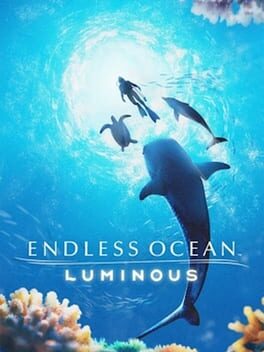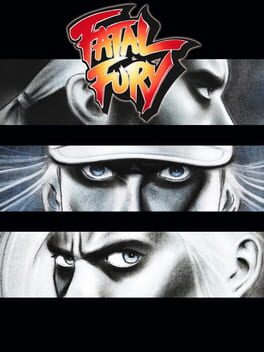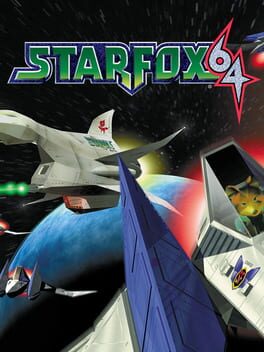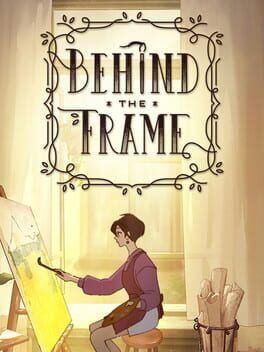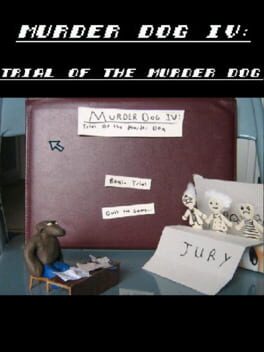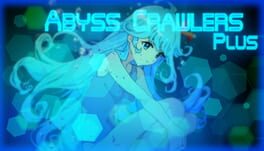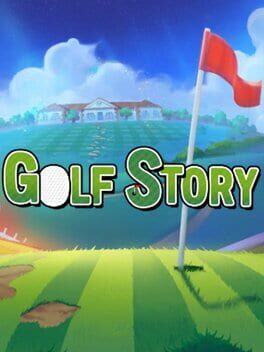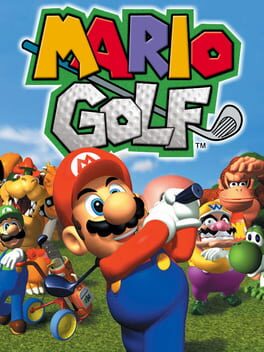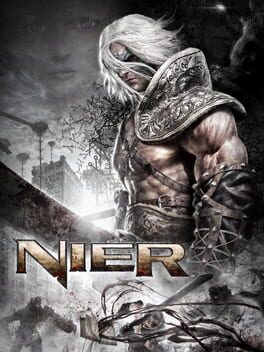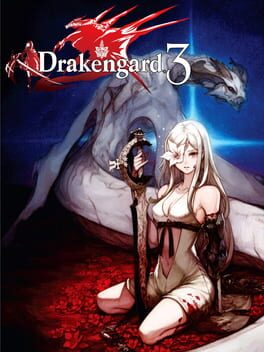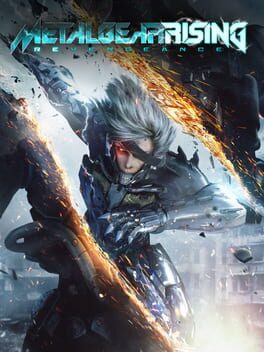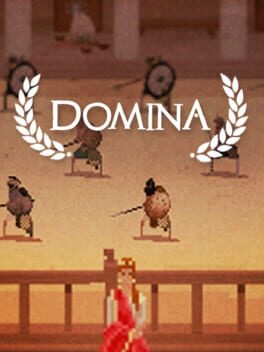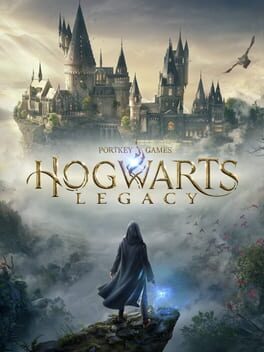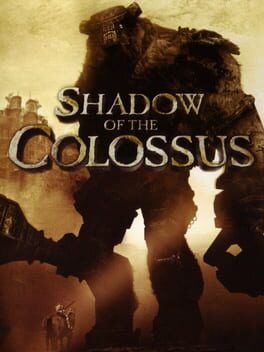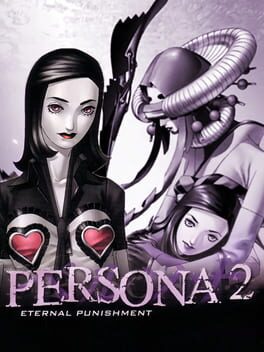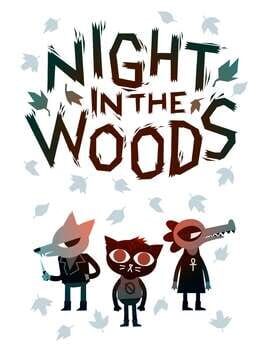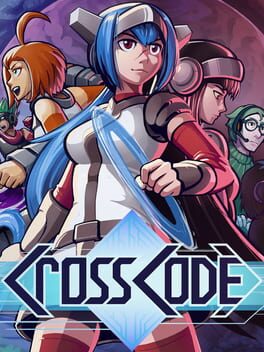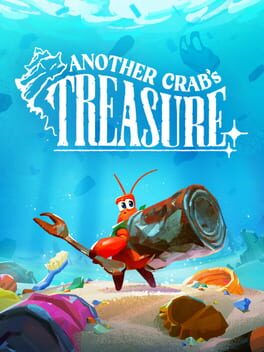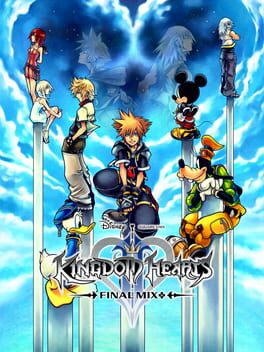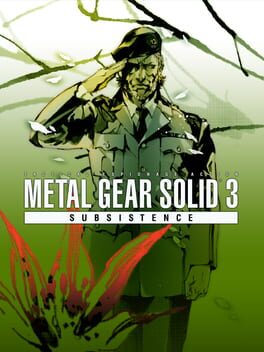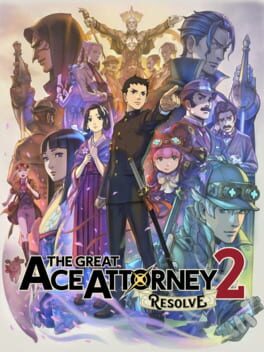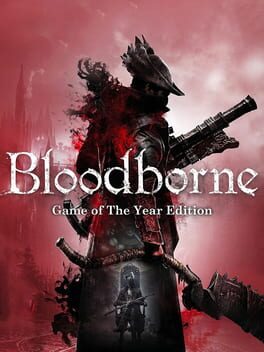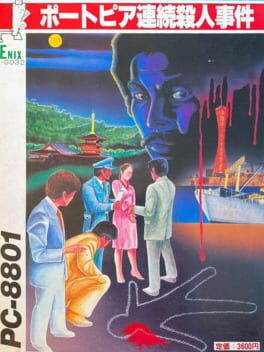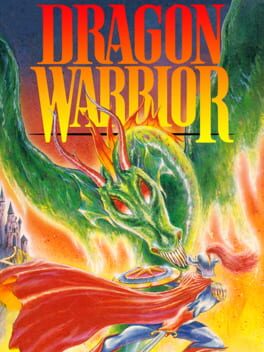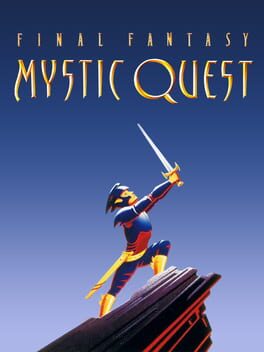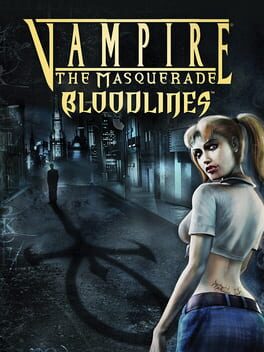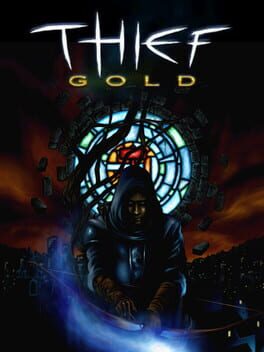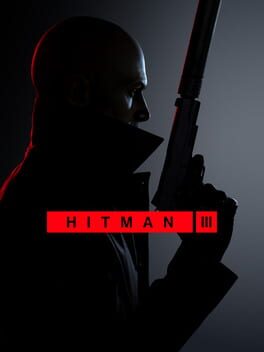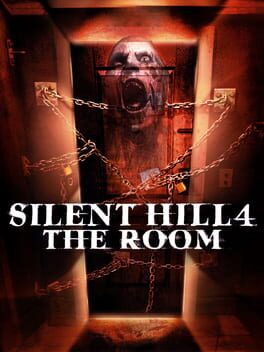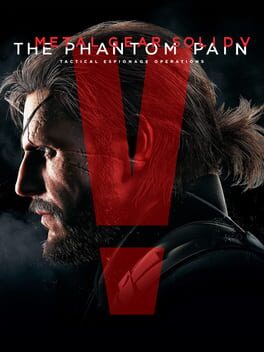GingerV
1111 reviews liked by GingerV
been thinking a lot about the death of le third places and how any and all third places are now virtual unless ur like a supremely wealthy person or other rare exceptions. thinking about like why I connected so heavily to red dead redemption when I was like 13 wasn’t because it was a violent and fun video game but bc it allowed me to connect w a part of america that I was seeing vanish before my eyes in real time growing up, gentrification or whatever etc. seeing a true untouched (well obv colonization or whatever but u understand what I mean, as untouched as possible) area of america that was long gone before my parents were even born was v special. I enjoyed exploring every nook and cranny and collecting flowers more than I ever did progressing the story. that’s how I feel w this,, it’s smth incredibly special to me and I love how this blends reality + fantasy + the past into a very real and very alive virtual third place. idgaf about the story mode or the online community,, all I care about is being able to experience things I’ll never be able to irl,, things that have been long gone or experiences that are locked out for me as someone who is uhhh poor lol. every night for the past week my life has looked like this for me and my bf https://youtu.be/nB7MdrLWZOc?si=oOECS8-oHP8GjrSv
maybe ur all haters idk !!!!
maybe ur all haters idk !!!!
Fatal Fury
1991
Think the best way of articulating why I find this supposedly old/outdated fighter sick as someone who came to it without ever having played a subsequent SNK fighter is the infamous Geese Howard boss fight. In a vacuum, he's as cheap as its reputation would lead you to believe: his Reppuken has damage output that's approximately one third of your health as well as range high enough for it to severely limit your options against him and he can also casually invalidate the attacks you manage to land on him with a throw that does comparable damage to the Reppuken. Prepare to see that screen of your character falling out the window often.
However, the more times you die to him, the more predictable (no pun intended) his AI starts to become. If you jump forward and attack, he will always go forward and attack. If you try to approach him by using a special, he'll prevent you from doing so with the Reppuken. If you stand still, he'll do the same for a bit before making his move. So you have to pick up on every little quirk on his AI and find out how to bait him into a situation where he gets hit. While the sheer damage of his heavy hitting attacks would seem unfair, getting one hit on him more often than not means throwing him out of his comfort zone and turning that one hit into multiple, thus doing a similar amount of damage to what he would have done to you with one hit. If you keep this up, you can even get him into a situation where your special move will land on the early frames of his Reppuken, interrupting said attack. Through this plan of attack as well as, my noob at fighting games ass was able to eventually 2-0 him and throw him out the window like he did to me 28 times.
With its small player roster of three characters and its arcade mode that faces you off against opponents designed with no expectations of being playable, Fatal Fury 1 feels like it was designed as a single player game first and with multiplayer as an afterthought. And I am being 100% unironic when I say this design philosophy makes me feel like I became a better fighting game player, be it through learning how to exploit the habits of seemingly unbeatable opponents or by building up the ability to press buttons faster to make the most of those small moments of vulnerability when they pop up. As someone whose engagement with fighting games has usually been respecting them from the sidelines and/or having a quick laugh in a run of arcade mode on the lowest difficulty, I truly get them now.
However, the more times you die to him, the more predictable (no pun intended) his AI starts to become. If you jump forward and attack, he will always go forward and attack. If you try to approach him by using a special, he'll prevent you from doing so with the Reppuken. If you stand still, he'll do the same for a bit before making his move. So you have to pick up on every little quirk on his AI and find out how to bait him into a situation where he gets hit. While the sheer damage of his heavy hitting attacks would seem unfair, getting one hit on him more often than not means throwing him out of his comfort zone and turning that one hit into multiple, thus doing a similar amount of damage to what he would have done to you with one hit. If you keep this up, you can even get him into a situation where your special move will land on the early frames of his Reppuken, interrupting said attack. Through this plan of attack as well as, my noob at fighting games ass was able to eventually 2-0 him and throw him out the window like he did to me 28 times.
With its small player roster of three characters and its arcade mode that faces you off against opponents designed with no expectations of being playable, Fatal Fury 1 feels like it was designed as a single player game first and with multiplayer as an afterthought. And I am being 100% unironic when I say this design philosophy makes me feel like I became a better fighting game player, be it through learning how to exploit the habits of seemingly unbeatable opponents or by building up the ability to press buttons faster to make the most of those small moments of vulnerability when they pop up. As someone whose engagement with fighting games has usually been respecting them from the sidelines and/or having a quick laugh in a run of arcade mode on the lowest difficulty, I truly get them now.
On release, Wonder was quickly crowned the new king of the 2D Mario series by legions of folks who’d been burned deeply by the New Super Mario Bros. tetrology's hollow aesthetic. I was there. I’ve played all of these games. 2D Mario games are important enough to me that I will play them on a TV, even if it means passers-by can look in and clearly tell that I’m not filing my tax returns. I finished Wonder with 100% completion on the weekend of October 20th, 2023 (unless you count the standees. I don’t). I’ve replayed all of its levels at least twice, with and without grabbing each Wonder Flower. You know I like this game a heck of a lot. Nevertheless, I’ve got a lot to say, not all of it good. This is gonna sound a bit dry.
On Super Mario Bros. Wonder (OR — "No Country for New Super Mario Bros.")
Visually, Wonder is closer to my Dream Mario than any other this side of Yoshi’s Island, and I do hope the next one commits even harder to the cartoonishness of this aesthetic. My first impression was that it had the best control of any game in the 2D series, and in most respects, I do still believe that. The “New” games carried with them this lumbering heaviness that I’m glad we’ve shed away. The Elephant power-up is a bit undercooked, but the other two additions appropriately shake up the player's relationship with enemies and the environment. Just being able to jump into enemies from below while at a full sprint makes the Drill a treat, even without considering its burrowing ability. The removal of a flight-based power was likely due to multiplayer, but in principle, it helps the game stay centered squarely on running and jumping, and encourages creative use of the Bubble Flower (which, yes, is more or less a retooled Bubble Yoshi from off of NSMBU). The Demon’s Souls online feature is welcome; I didn’t see myself playing as a guardian angel in a Mario game, but here we are. Badges are a solid addition too, especially for newcomers. I can play as Daisy. Awesome stuff. Promising. Shame that, to my taste, there’s a lot left on the table here.
Every stage of this game locks its enemies and visuals and stage gimmicks down almost completely; you’re not likely to see much crossover. There’s one rolla-koopa stage, one hoppycat stage, one condart stage. These guys are stuck in their zones. It results in an impressive level of variety, but also prevents the game from meaningfully building on concepts from stage to stage. You don’t get that blending of flavors you’ll find in the series’ earliest entries. In this respect, it’s arguably even more formulaic than the games it’s trying to subvert. Each level’s gimmicks undergo a similar arc before being put away, each of them with a Wonder Flower to find which activates a minigame or setpiece. Nothing so plain as the well-documented and scientifically-proven "Four Step Level Design" of New Super Mario Bros., they just remembered to add the sugar. Would people still be talking about Mario 3's Angry Sun if you had to pop a regularly-mandated Wonder Flower to activate it? I don’t think it helps that these stages are threaded together as loosely as they are.
Playing into its save feature, Super Mario World invited its players to revisit levels for alternate exits and hidden secrets. Wonder doubles down on that attitude, with a wide-open map and only a single file per user. You’re meant to dig around in these levels and scour the world, but there isn’t really a whole lot to find. Yes, there are large coins to collect, tops of flagpoles to grab, but – and I hate to grumble – these pale in comparison to the discovery of warp zones, unique power-ups, and routes which alter the trajectory of a playthrough. I think they’d have been better off hiding badges within full stages than keeping them in shops or bespoke levels on the overworld. I’m of the opinion that collectibles should feel immediately tangible and exciting. Wonder sidesteps the checklist school of design for the most part, but I’d like to see it drop outta these games completely.
Here's what I'm getting at – I don’t think Wonder is adept at curating its adventure, and I don’t get the impression that its developers made that a priority. There’s a sort of halfhearted effort to add a single story beat to each world, and it's unconvincing. Possible plants just don't tend to pay off. The talking flowers never do. Stages are clustered together with respect to difficulty and theming, but any pretense of a “flow” between them, that levels together form an arc, is rarely suggested. A level is an island unto itself. It’s because the game isn’t concerned with its own replayability, actively obfuscating the option to start a New Game. It’s because Wonder isn’t all that interested in blending ideas between stages. It’s because the “Wonder” gimmick, ironically, requires each level to follow the same general beats.
I came for an album, and what I got was a collection of singles. They’re good, even great singles, but I don’t think it comes together as a whole game in the same way each of the old classics did. I hope Wonder is a sign that Nintendo is open to getting even more experimental with the conventions of this series (maybe cut out the world map next time, have one continuous game of back-to-back platforming levels), and I’m glad it was well received. You can feel those seasoned designers stretching their legs with this one — it beats out the New Super Marios on charm factor alone — and I squeezed every last drop I could out of it. I believe greater heights are within reach for this series, but if this is the last for a while, I'll still be more than appreciative that Wonder got its moment in the spotlight.
(...if you'd like to see where this falls on my list of the Thirty-Five Best Games I Played in 2023, you can check it out here. Thanks for reading!)
On Super Mario Bros. Wonder (OR — "No Country for New Super Mario Bros.")
Visually, Wonder is closer to my Dream Mario than any other this side of Yoshi’s Island, and I do hope the next one commits even harder to the cartoonishness of this aesthetic. My first impression was that it had the best control of any game in the 2D series, and in most respects, I do still believe that. The “New” games carried with them this lumbering heaviness that I’m glad we’ve shed away. The Elephant power-up is a bit undercooked, but the other two additions appropriately shake up the player's relationship with enemies and the environment. Just being able to jump into enemies from below while at a full sprint makes the Drill a treat, even without considering its burrowing ability. The removal of a flight-based power was likely due to multiplayer, but in principle, it helps the game stay centered squarely on running and jumping, and encourages creative use of the Bubble Flower (which, yes, is more or less a retooled Bubble Yoshi from off of NSMBU). The Demon’s Souls online feature is welcome; I didn’t see myself playing as a guardian angel in a Mario game, but here we are. Badges are a solid addition too, especially for newcomers. I can play as Daisy. Awesome stuff. Promising. Shame that, to my taste, there’s a lot left on the table here.
Every stage of this game locks its enemies and visuals and stage gimmicks down almost completely; you’re not likely to see much crossover. There’s one rolla-koopa stage, one hoppycat stage, one condart stage. These guys are stuck in their zones. It results in an impressive level of variety, but also prevents the game from meaningfully building on concepts from stage to stage. You don’t get that blending of flavors you’ll find in the series’ earliest entries. In this respect, it’s arguably even more formulaic than the games it’s trying to subvert. Each level’s gimmicks undergo a similar arc before being put away, each of them with a Wonder Flower to find which activates a minigame or setpiece. Nothing so plain as the well-documented and scientifically-proven "Four Step Level Design" of New Super Mario Bros., they just remembered to add the sugar. Would people still be talking about Mario 3's Angry Sun if you had to pop a regularly-mandated Wonder Flower to activate it? I don’t think it helps that these stages are threaded together as loosely as they are.
Playing into its save feature, Super Mario World invited its players to revisit levels for alternate exits and hidden secrets. Wonder doubles down on that attitude, with a wide-open map and only a single file per user. You’re meant to dig around in these levels and scour the world, but there isn’t really a whole lot to find. Yes, there are large coins to collect, tops of flagpoles to grab, but – and I hate to grumble – these pale in comparison to the discovery of warp zones, unique power-ups, and routes which alter the trajectory of a playthrough. I think they’d have been better off hiding badges within full stages than keeping them in shops or bespoke levels on the overworld. I’m of the opinion that collectibles should feel immediately tangible and exciting. Wonder sidesteps the checklist school of design for the most part, but I’d like to see it drop outta these games completely.
Here's what I'm getting at – I don’t think Wonder is adept at curating its adventure, and I don’t get the impression that its developers made that a priority. There’s a sort of halfhearted effort to add a single story beat to each world, and it's unconvincing. Possible plants just don't tend to pay off. The talking flowers never do. Stages are clustered together with respect to difficulty and theming, but any pretense of a “flow” between them, that levels together form an arc, is rarely suggested. A level is an island unto itself. It’s because the game isn’t concerned with its own replayability, actively obfuscating the option to start a New Game. It’s because Wonder isn’t all that interested in blending ideas between stages. It’s because the “Wonder” gimmick, ironically, requires each level to follow the same general beats.
I came for an album, and what I got was a collection of singles. They’re good, even great singles, but I don’t think it comes together as a whole game in the same way each of the old classics did. I hope Wonder is a sign that Nintendo is open to getting even more experimental with the conventions of this series (maybe cut out the world map next time, have one continuous game of back-to-back platforming levels), and I’m glad it was well received. You can feel those seasoned designers stretching their legs with this one — it beats out the New Super Marios on charm factor alone — and I squeezed every last drop I could out of it. I believe greater heights are within reach for this series, but if this is the last for a while, I'll still be more than appreciative that Wonder got its moment in the spotlight.
(...if you'd like to see where this falls on my list of the Thirty-Five Best Games I Played in 2023, you can check it out here. Thanks for reading!)
Chrono Trigger
1995
When I was young and foolish, I abandoned Chrono Trigger immediately after the first boss. I can explain — I was hoping to play it with my brother, since we'd long ago shared several Mario RPG experiences, but, despite Frog's best efforts, it succeeded only in boring him to apathetic tears. So mired was my mind in the stigma surrounding the Japanese Role-Playing genre that I submitted to his appraisal. It went back on the shelf. When I did finally progress beyond Yakra about a year later, flanked by a revolving door of spectators at a library, I resolved never to trust my brother's tears ever again. It spoke to me so strongly that, in the year post-Chrono Trigger, I went about chasing its tail.
I discovered that Final Fantasy IV had grandfathered Chrono Trigger's narrative pacing, Dragon Quest V's premise was at least as solid and perhaps even more beautiful, Final Fantasy VII succeeded its cinematic ambition to colossal effect, Dragon Quest III established the thematic foundation that courses through its veins, and Final Fantasy VI pioneered the core of its act structure. And yet, with each new drop of reverence gained for the JRPG and the visionaries that drove it forward, Chrono Trigger's lingering expectation hovered above, doing its step-siblings no favors.
Not to bemoan those relatives, which range from good to As Good As Chrono Trigger (I promise), but playing them more wholly reveals what it was that Yuji Horii and Hironobu Sakaguchi were trying to escape. In a genre derided for slow-going and number-crunching (both great, it turns out), here was a game that could move with enough genuine grace to make Super Metroid blush. Its meticulous staging and seamless battle transitions firmly ground its ever-breathing characters in the setting and drama of the moment. More so than even the dialogue, party members express themselves and their relationships through clean, action-inflected combat mechanics and colorful animations. Its many, tiny opportunities for narrative decisions add up alongside a multi-layered yet coherent story, and amount to a game that feels almost as directed by you, the player, as its creators. It's never afraid to end, whenever you may choose to end it.
Chrono Trigger is the nexus point at the center of its genre, the moment its progenitors decided to put aside their differences Just This Once and build something without any of the baggage of their respective series. It's almost heartbreaking to imagine them going their separate ways, returning home with lessons they couldn't keep. It was a glimpse into a possible future for videogames, but the die had already been cast, and the future refused to change.
I discovered that Final Fantasy IV had grandfathered Chrono Trigger's narrative pacing, Dragon Quest V's premise was at least as solid and perhaps even more beautiful, Final Fantasy VII succeeded its cinematic ambition to colossal effect, Dragon Quest III established the thematic foundation that courses through its veins, and Final Fantasy VI pioneered the core of its act structure. And yet, with each new drop of reverence gained for the JRPG and the visionaries that drove it forward, Chrono Trigger's lingering expectation hovered above, doing its step-siblings no favors.
Not to bemoan those relatives, which range from good to As Good As Chrono Trigger (I promise), but playing them more wholly reveals what it was that Yuji Horii and Hironobu Sakaguchi were trying to escape. In a genre derided for slow-going and number-crunching (both great, it turns out), here was a game that could move with enough genuine grace to make Super Metroid blush. Its meticulous staging and seamless battle transitions firmly ground its ever-breathing characters in the setting and drama of the moment. More so than even the dialogue, party members express themselves and their relationships through clean, action-inflected combat mechanics and colorful animations. Its many, tiny opportunities for narrative decisions add up alongside a multi-layered yet coherent story, and amount to a game that feels almost as directed by you, the player, as its creators. It's never afraid to end, whenever you may choose to end it.
Chrono Trigger is the nexus point at the center of its genre, the moment its progenitors decided to put aside their differences Just This Once and build something without any of the baggage of their respective series. It's almost heartbreaking to imagine them going their separate ways, returning home with lessons they couldn't keep. It was a glimpse into a possible future for videogames, but the die had already been cast, and the future refused to change.
Star Fox 64
1997
When I rummage back through the depths of my earliest memories, I sometimes graze the edge of a small spacecraft careening through the stars. It barrels around clusters of asteroids on Johnny’s CRT television on a sunny afternoon, powered by a grey oblong rectangle and stored inside of another…smaller rectangle. It sure didn’t look like a GameCube, yet here it was: proof that videogames had existed before me (I can recall a time before I knew what it meant that there had been a year called “1997”).
‘Course, I wouldn’t end up playing Star Fox 64 consciously for another fifteen or sixteen years at least. Though the release of its 2011 remake tapped at that far, hazy corner of my mind, it came during a time when I was becoming deeply entrenched in the Zelda series, and I would stay there a while. Only much later would I find myself inexplicably compelled to try Star Fox 64 at that same private library where Chrono Trigger had become a permanent fixture of my heart, maybe to finally satisfy a quiet curiosity that had been bubbling since the before-times. Star Fox 64 had patiently lingered as the first-ever game on my “backlog;” I thought I’d do myself a favor and knock it down. Instead, something else happened.
The first time I played Star Fox 64 for real, I sucked hard. I failed to protect Fortuna’s Defense Post from Star Wolf, let Slippy get slapped over to Titania, and exploded on Bolse. The game’s true personality was far more tactile and unforgiving than I’d come to expect from the “barrel roll” game on the Nintendo 64, and I was astonished by the level of respect it showed by tossing me into the deep end. That on its own recalled a brand of mechanical confidence I didn’t expect in the post-SNES era, but the thing that stood out to me most was that it let me fail these objectives and continue regardless, just down a different route than I would’ve taken otherwise. Where had this been all my life?
In the time I’d spent playing and talking about these things, I’d imagined my personal ideal videogame as one with narrative events that would speak not through dialogue, but the language of action game mechanics. I wanted a game whose branching story decisions were made using performance. I’d already found some examples of this (definitely play Papers, Please) and, upon honing what might be my “critical eye,” I found it wasn’t necessarily uncommon for games to use mechanics to demonstrate and heighten their story concepts (though the narrative told through the gameplay was sometimes at odds with the writing), but even the best of them weren’t quite doing exactly what I’d dreamt up. Neither was Star Fox 64, but man if it doesn’t have its moments.
Not every branching path comes with a contextually sensical reason, but they all emerge directly from the player’s activities throughout each stage, using the same verbs as every other interaction. Show off with some fancy flying, and Falco will one-up you by leading the group to a hidden zone. Save his squadron, and Bill might just show up in a later area to offer his assistance. That giant robot won’t be able to swipe Slippy into next week if you manage to blast it apart quickly enough. Further contributing to this cohesion are the mechanical roles each of your team members play during regular gameplay. All three assist during crucial battles and provide necessary banter hinting toward the various hidden exits, but you’ll have to be mindful to protect them if you want their help. Notably, bosses' health bars doesn’t show up at all if Slippy’s been downed, which may seem like a small thing, but you might be surprised at how far that little scrap of information can go in aiding your in-the-moment decision-making. It’s all done so flowingly, so effortlessly here that, in 2019, I was taken aback that I’d barely, if ever encountered a game that managed to achieve such a marriage of characterization and action gameplay that felt as consequential to an overall playthrough. I wouldn’t have guessed I'd have found it coming from Nintendo, and in 1997’s Star Fox 64, of all places.
For some players and future Star Fox developers, the potential of the series’ charismatic cast was the key takeaway, but I can’t say I was hugely invested in the possibility for their development. The crew is more "Jaws" than "Blade Runner," more "Ghostbusters" than "Ghost in the Shell." They're not here to grow and change, they're here to solve a problem. No, it was the potential of the game’s format that inspired my imagination.
Rhythm aside, there may be no genre that provides the developer such control over the timing of each setpiece, challenge, transition, and twist as the rail shooter. It seems obvious in retrospect, but I hadn’t given it a whole lot of thought until playing this game, likely thanks to their limited mechanical vocabulary and reputation for simplicity. Star Fox 64 is a developing interactive adventure story, and a more successful one than Half-Life, I think, for managing to give real consequences to the player’s decisions, and even their failures to successfully make decisions, by actively altering their progression (all while hitting that slick feature-length playtime). Time marches on, your enemies aren’t going to wait until you’re ready to engage them, and (with the exception of the game’s “All-Range” segments) every decisive action has to be performed at the correct moment in the script in order to succeed. “Cinematic” as this can feel, it never betrays the roots of the genre, still lending itself perfectly to the score-based joys of an arcade experience.
It’s hard not to feel that, of Miyamoto’s productions, Star Fox is easily the most Sega. A cast of talking animals, an arcade premise, an oddly technical control scheme which always takes a second longer to settle back into than you might expect, but Sega was already way ahead of me in recognizing what rail shooters were capable of. Star Fox 64 isn’t diminished by the presence of Panzer Dragoon Zwei or Treasure’s Sin and Punishment, though. In fact, it’s a testament to the ingenuity of these developers working within a fairly similar framework (and perhaps the deceptive flexibility of said framework) that none of these games manage to overshadow one another in any way. It just happens that, somehow, Nintendo’s take on the rail shooter remains the most structurally experimental of them all.
‘Course, I wouldn’t end up playing Star Fox 64 consciously for another fifteen or sixteen years at least. Though the release of its 2011 remake tapped at that far, hazy corner of my mind, it came during a time when I was becoming deeply entrenched in the Zelda series, and I would stay there a while. Only much later would I find myself inexplicably compelled to try Star Fox 64 at that same private library where Chrono Trigger had become a permanent fixture of my heart, maybe to finally satisfy a quiet curiosity that had been bubbling since the before-times. Star Fox 64 had patiently lingered as the first-ever game on my “backlog;” I thought I’d do myself a favor and knock it down. Instead, something else happened.
The first time I played Star Fox 64 for real, I sucked hard. I failed to protect Fortuna’s Defense Post from Star Wolf, let Slippy get slapped over to Titania, and exploded on Bolse. The game’s true personality was far more tactile and unforgiving than I’d come to expect from the “barrel roll” game on the Nintendo 64, and I was astonished by the level of respect it showed by tossing me into the deep end. That on its own recalled a brand of mechanical confidence I didn’t expect in the post-SNES era, but the thing that stood out to me most was that it let me fail these objectives and continue regardless, just down a different route than I would’ve taken otherwise. Where had this been all my life?
In the time I’d spent playing and talking about these things, I’d imagined my personal ideal videogame as one with narrative events that would speak not through dialogue, but the language of action game mechanics. I wanted a game whose branching story decisions were made using performance. I’d already found some examples of this (definitely play Papers, Please) and, upon honing what might be my “critical eye,” I found it wasn’t necessarily uncommon for games to use mechanics to demonstrate and heighten their story concepts (though the narrative told through the gameplay was sometimes at odds with the writing), but even the best of them weren’t quite doing exactly what I’d dreamt up. Neither was Star Fox 64, but man if it doesn’t have its moments.
Not every branching path comes with a contextually sensical reason, but they all emerge directly from the player’s activities throughout each stage, using the same verbs as every other interaction. Show off with some fancy flying, and Falco will one-up you by leading the group to a hidden zone. Save his squadron, and Bill might just show up in a later area to offer his assistance. That giant robot won’t be able to swipe Slippy into next week if you manage to blast it apart quickly enough. Further contributing to this cohesion are the mechanical roles each of your team members play during regular gameplay. All three assist during crucial battles and provide necessary banter hinting toward the various hidden exits, but you’ll have to be mindful to protect them if you want their help. Notably, bosses' health bars doesn’t show up at all if Slippy’s been downed, which may seem like a small thing, but you might be surprised at how far that little scrap of information can go in aiding your in-the-moment decision-making. It’s all done so flowingly, so effortlessly here that, in 2019, I was taken aback that I’d barely, if ever encountered a game that managed to achieve such a marriage of characterization and action gameplay that felt as consequential to an overall playthrough. I wouldn’t have guessed I'd have found it coming from Nintendo, and in 1997’s Star Fox 64, of all places.
For some players and future Star Fox developers, the potential of the series’ charismatic cast was the key takeaway, but I can’t say I was hugely invested in the possibility for their development. The crew is more "Jaws" than "Blade Runner," more "Ghostbusters" than "Ghost in the Shell." They're not here to grow and change, they're here to solve a problem. No, it was the potential of the game’s format that inspired my imagination.
Rhythm aside, there may be no genre that provides the developer such control over the timing of each setpiece, challenge, transition, and twist as the rail shooter. It seems obvious in retrospect, but I hadn’t given it a whole lot of thought until playing this game, likely thanks to their limited mechanical vocabulary and reputation for simplicity. Star Fox 64 is a developing interactive adventure story, and a more successful one than Half-Life, I think, for managing to give real consequences to the player’s decisions, and even their failures to successfully make decisions, by actively altering their progression (all while hitting that slick feature-length playtime). Time marches on, your enemies aren’t going to wait until you’re ready to engage them, and (with the exception of the game’s “All-Range” segments) every decisive action has to be performed at the correct moment in the script in order to succeed. “Cinematic” as this can feel, it never betrays the roots of the genre, still lending itself perfectly to the score-based joys of an arcade experience.
It’s hard not to feel that, of Miyamoto’s productions, Star Fox is easily the most Sega. A cast of talking animals, an arcade premise, an oddly technical control scheme which always takes a second longer to settle back into than you might expect, but Sega was already way ahead of me in recognizing what rail shooters were capable of. Star Fox 64 isn’t diminished by the presence of Panzer Dragoon Zwei or Treasure’s Sin and Punishment, though. In fact, it’s a testament to the ingenuity of these developers working within a fairly similar framework (and perhaps the deceptive flexibility of said framework) that none of these games manage to overshadow one another in any way. It just happens that, somehow, Nintendo’s take on the rail shooter remains the most structurally experimental of them all.
Metroid Fusion
2002
Sunny-side-up eggs and toast. A warm cup of coffee. Relaxing piano music. An easel and a canvas. What better way to enjoy a morning?
Behind the Frame invites its player to revel in that tranquil scenery. It tells the story of a young painter who's trying her best to enter an art exhibition in New York and, on an afternoon that would have been spent with the easel, ends up learning more about an old neighbor who doesn't interact with other people much. As a short narrative-focused game, it's better not to go any deeper into the story in a review: suffice to say, it's a touching and easy to relate to story about being true to oneself and one's feelings.
Much like Tangle Tower, another 2D hand-animated point-n-click on Steam, Behind the Frame immediately distinguishes itself through its immaculate vibes: the Ghibli-inspired characters and animation, gorgeous environments and emotional tunes are highly effective in setting the mood to our lovable artist's surreal adventure. The similarities end there, however, as Behind the Frame is much more focused on its narrative than anything else.
The game is strictly linear, with six chapters composed of events that unfold in sequence -- not unexpected from a narrative game, but the particular choice of mechanics here does end up giving off this distinct feeling of being constrained. It's also far lighter on puzzles, which, bar the ones at the tail end of the game, are solvable within seconds. This makes the package less attractive for its brainteasers, and more of a game to unwind to on a lazy evening. On that front, it makes a very compelling case for itself.
This is the first original IP from Akatsuki Taiwan, and it does leave a good impression along with the lingering question on whether they'll make more original games like this.
Behind the Frame invites its player to revel in that tranquil scenery. It tells the story of a young painter who's trying her best to enter an art exhibition in New York and, on an afternoon that would have been spent with the easel, ends up learning more about an old neighbor who doesn't interact with other people much. As a short narrative-focused game, it's better not to go any deeper into the story in a review: suffice to say, it's a touching and easy to relate to story about being true to oneself and one's feelings.
Much like Tangle Tower, another 2D hand-animated point-n-click on Steam, Behind the Frame immediately distinguishes itself through its immaculate vibes: the Ghibli-inspired characters and animation, gorgeous environments and emotional tunes are highly effective in setting the mood to our lovable artist's surreal adventure. The similarities end there, however, as Behind the Frame is much more focused on its narrative than anything else.
The game is strictly linear, with six chapters composed of events that unfold in sequence -- not unexpected from a narrative game, but the particular choice of mechanics here does end up giving off this distinct feeling of being constrained. It's also far lighter on puzzles, which, bar the ones at the tail end of the game, are solvable within seconds. This makes the package less attractive for its brainteasers, and more of a game to unwind to on a lazy evening. On that front, it makes a very compelling case for itself.
This is the first original IP from Akatsuki Taiwan, and it does leave a good impression along with the lingering question on whether they'll make more original games like this.
Signalis
2022
Deleuze + Signalis
This ended up more an essay than a review. Also, I’m not going to cite this properly, but all sources are provided at the end. Sorry! ^w^
CW for suicide/death
Arnold Böcklin’s Isle of the Dead are a series of Swiss symbolist paintings, painted through five separate versions of the same scene, produced from 1880 to 1886. It depicts someone rowing to/from a crescent-like island, a second figure stands at the stern, statuesque in white, as if marble. The island is large, foreboding, the figures small, miniature-esque, no matter the medium or year. I’m not particularly enamoured by the piece itself, but the idea of the repetitions and transformations of the same concept has always interested me, the impression of the painting untied, always linked to the ways that they are represented to us. In different variations, the disturbances of the water from the prow shows the boat moving towards or away from the island. Especially interesting is the fact that Böcklin edited the first version – updated, perhaps – to keep it in line with an addition he made to the second. The boat and the figures aboard were not an original fixture in the piece, when now it is what the eye focuses on. The stability of the scene is disrupted through this edit, the rowing man and the standing woman, art made into the white foam off a wave of continuity rather than the stagnant permanence imposed in galleries.
One of the main themes which struck me from SIGNALIS is Die Toteninsel, a reference to the origin of the repeated motif– a semi-hypnotic 5 note pattern, crawling as it changes – from Rachmaninoff’s Isle of the Dead, which itself was inspired by a black and white reproduction of Böcklin's Isle of the Dead he saw in 1907. The adaptation of this theme by 1000 Eyes is a tad slower, but rather than seeming lethargic, it allows an emphasis on the ephemeral quality of the original’s opening, sometimes lost even in the best of recordings, such as Pletnev’s hastier version, with the Russian National. It’s the primary reason as to why I far prefer Svetlanov’s recording, with the BBC Symphony, even to Rachmaninoff’s own recording; an unusual pacing allows more creative handling and a far more deliberate and lasting progression towards the Dies Irae – one accentuated by viola tremolo, of all things. These first five notes, however, are the prelude to the scene itself, the point at which the music most embodies the painting: a slow drift over a calm surface, the prow of Charon’s boat only lending to a kind of intense, fixated, stillness. The mist-drenched scene is one inscribed with a sense of dread, gentle movement over slight eddies towards something more, something worse.
The music is one of the main draws of any game for me, and the use of semi-acerbic industrial noises in Riot Control made teeth itch in a way few game soundtracks have. This is a staple of the soundtrack, a kind of grating-ness which puts into harsh relief the relation between the character and environment, rooms hostile even within the apparent human basis of construction. Therefore, the pieces which break from this allow a reprieve from anxiety inducing hallways, leaving the repeated use of the 5/8 motif unusually affecting. It again rears its head in Ewige Wiederkunf – another name verging on pun, eternal return – this time on the organ (an easy way to win my heart), where the haunting quintuplet gives way for a rippling layer, itself only making space for almost sporadic piano notes; the placid sea of noise formed by the organ remains, even as it fades out of understanding.
In a critical but also fundamentally historical turn, Deleuze attempts to peel back the layers of domination representation has secured in his genetic-evaluative principle-thesis, Difference and Repetition. This is primarily done through a dissection of identity and how difference and repetition relate. Importantly, and easily misunderstandable, he explores this through the concept of intensive difference – differences that are fundamentally changed through itself. For example, length – 2 centimetres being divisible into two identical lengths – is extensive, whereas temperature – 2 degrees being divided results in one degrees (0-1) being different from the other (1-2) – is intensive. The entire project is, essentially, following this to the logical conclusions, the real escaping the stability afforded by the Platonic forms, replaced with an embroiling sea of immanence.
The centrality of the focus of pure difference in Deleuze’s philosophy is difficult not to understate: difference not between fixed identities but between expressions of pure movement, alteration between undefined points. This process, of differentiation of Ideas as multiplicities of intensive difference, is attempted in the same way that the dy/dx makes visible the Idea of the curve. The relations of Ideas and the Ideas themselves are ungraspable, where nothing is afforded proper stability, leading to an ontology married to becoming. While Ideas are not actual, Deleuze wants to validate their ontological realness, allowing for the virtual, the realm of pure intensive difference, coming about through the interconnectedness of the series, determining the structural properties through bringing into relation a multiplicity of other undetermined elements, without ascribing predicates to a subject. The virtual is thus alternative to the real-possible distinction, allowing an Idea – something that exists entirely in the virtual – to plague us from outside the world of the actual, but within the real. To make something actualised is therefore not to make something new, but instead merely to realise the virtual via creative process, which in turn reciprocally produces change within the virtual itself. We cannot ever grasp the virtual, only ever feel the effects of it, in the same way that trauma is never itself actualised. With multiple expulsions of a single trauma, the repetition is defined via variation along the difference of each substantiation of it, rather than the trauma itself as singular, separable, identity. As Willliams explains, ‘[Each] walk that you take everyday is different each time and significant each time because it involves variations in intensities with respect to earlier and later ones and changing relations with wider series. You change with the walk and with the sensations and their intensities’. Thus, each walk is made unique, but also reciprocally determined by and determines the subject.
The Swiss modernist Gerard Meier wrote a novel of the same title – Toteninsel – a slow, drifting chat between two aging men, the long speeches of one blurring to the thoughts of the other. In the few rare moments of silence from Baur, Bindshädler considers the plight of the crickets, the ‘philharmonic muscle orchestra’, a background layer of the distant noise of the world, inhabiting and inhibiting the walk. The descriptions emphasise the almost alien nature of it – teeth on wings, ears on legs –exaggerating the etchings the world imprints on us, a blade caressing the lines of the body. The book is intensely occupied with art, past walking alongside present in poorly disguised autobiography, riddled in the spiralling structures of sentences. Art exhibits exactly what Meier is so fascinated by in the face of his twilight years: intensities encroaching, interrupting, yet also furnishing a winding wend.
Death in the sphere of the virtual becomes something extended beyond the death in the actual. It is inspired by Freudian and Heideggerian deaths, where the actual death becomes an event our entire lives become determined by, in relation towards – Freud with the death drive, Heidegger with being-towards-death. In either case, life is defined by its cessation. However, Deleuze’s use of death is more forgetfulness, an amnesia of what we were to allow for the birth of what we are, and what we will be. The small deaths dissolve the self, allowing for a constant state of becoming. These can only be understood as virtual deaths, opposed to the final cessation that the actual death provides us. In order to connect anew, we must relinquish the permanence of any particular self or body, a ritual forgetting. Suicide brings an odd dilemma, in the sense that it appears to try and force the actual death and its double to release together, to be entangled and intertwined in one singularity. The deaths of the virtual and the actual death can never resolve, however, so every suicide is ultimately futile; the deaths in the virtual cannot coalesce with the actual, because the actual suicide creates new intensities even as it cancels older ones. Therefore, the actual and the virtual play a dance, always at arm’s length from one another, following each other’s moves – an unequal one, but so too ballet. Each attempt to force the two only releases new intensities, re-interpreted back into the actual.
Why do I bring Deleuze up in a review ostensibly about SIGNALIS? Perhaps to make use of a philosophy degree of rapidly waning usefulness. But also because I believe that SIGNALIS can only be understood in its obscurities. Instead of dismissing the usage of historical artifacts in the game-space as heavy-handed and ill-construed emphases on the loop-like nature, paratextual instances are instead the basis for understanding the relations of characters; each is formed by and generates its own intensities through disruptions, each one reaffirming and in turn determining the virtual. To understand the game as an intertwinement of transcendent characteristics – a repetition of Elster’s love, or an element of over-arching permanence to Ariane’s identity – completely ignores the lengths to which dominance of a singular, identarian approach is undercut.
SIGNALIS can be most thoroughly felt in impressions from the bones and carcasses of others; the safe rooms and puzzles are eerily (and often frustratingly) similar to older Resident Evil games, the abstracized plot to Silent Hill, the setting to Dead Space, the regurgitation of classic music (Chopin, Rachmaninoff, Schubert). Most notably and obviously there are textual references to the King in Yellow (Chambers), Die Toteninsel (Böcklin), and The Shore of Oblivion (Bracht). Each one is thrown at the player, obtuse and pernicious. And yet the lacerating effect of this, the shifting perspectives, the jarring cutscenes allows a recognition of the repeated structures undergirding. A thousand bodies cushioning a landing in an elevator shaft, the game is built out of repetition and parallels. The laboured grasping through metal halls is remade in these disruptions – or perhaps remade because of its disruptiveness – allowing for an art which attempts to shake an understanding of it as whole.
To secure this, the physicality of SIGNALIS’ world dissolves, achieved through flickering in and out of art-styles and aesthetics and location – [THIS SPACE INTENTIONALLY LEFT BLANK]. Ariane repeats in Alina, intensities re-iterating within a realm of un-actualised existence. Falke and Ariane and Alina, Elster and Elster and Elster; multiplicities from which are differentiated the same principle, each one a terrible death, each one a painful birth. Obvious differences only serve to contour the repetition itself, an incision in the whole. Messages sent, repeated, received through four different languages. Each character is exposed as pure becoming, death encountered in the unconscious of life, a complete destabilisation of the singular identity, reconstructed only through the teeth of each other. Repeated virtualities are present in actualisation, the devotion for one and another, the relationship of each serving to shape an undetermined Idea that exists behind all of them, present through mirrored scenes, and yet all reciprocally entangled; self-referentiality which cannot be severed. The stylistic flare – poses imitated in cuts, traced scenes from Ghost in the Shell, a 5/8 motif seeping in, The Isle of the Dead and The Shore of Oblivion – becomes obvious, each serving not to show similarities between the two but differences in the whole via disruption. And what is this all in service of? Simply put, a-normative Queer love (Queer as other, Queer as wrong).
What is actually gained from this reading, however? What new is formed? It can transubstantiate away confusion to a baseline solidity, explain the impenetrability of the text as ‘actually that’s the whole point’ in a twist which can only be seen as self-righteously hipster-esque. My intent is moreso an understanding of the game as Queer (interfering), first and foremost. Blind devotion entwined with constant undercutting of the Actual challenges our pre-held notion of the Real - all that is solid melts into air. Set-dressing here is made to focus this idea; a vapid gesticulation towards authoritarian systems as shorthand for rigid absoluteness is merely a way for the Queer to break through in fleshy contortion. And, as Elster on the Penrose, perceived wholeness melts away in the exposure of the brutal alterity of art. The shredding of textual membranes within SIGNALIS forces the player to confront the indigestible, to re-align oneself, where one cannot understand it merely by grasping the whole, but instead through tracing the relation between repeated elements. Put simply, the deep-rooted un-intelligibility of disparate, colliding slices allows for a prioritisation of foreign intensities, and thus the encounter with a radical Other.
For this is something I have not touched on. The interminable project of all French philosophers rears its head once again; an absence, an unfinished question within Deleuze’s project. The Self/Other and real interaction with alterity is left absent, or open. Interpretations of Deleuze agree that he tends towards a structure for an ethical system: do not ‘explicate oneself too much with the other, not to explicate the other too much'. Express your singularity, replay the events that make and unmake you, experiment with others through creative destruction. SIGNALIS should be understood as an attempt of Deleuzian ethics, between the game and the player, between the relations of art, between the self and its repetitions. Each artifact is thus a fracture of art, tearing the smooth skin of our attention, an attempt to facilitate radical divergences, rekindling relations, forcing them more strange, more obscure, more unsettling. An otherness that always introduces new intensity, that disfigures and removes; Ariane to Elster.
Love driven from/by destructive (creative) need, an otherness which rips apart and claws back together. I miss it.
Works Cited
Böcklin, A. (1880). Isle of the Dead: Basel. Oil on canvas. Kunstmuseum Basel, Basel.
Böcklin, A. (1880). Isle of the Dead: New York. Oil on board. Metropolitan Museum of Art, New York.
Böcklin, A. (1883). Isle of the Dead: Third Version. Oil on board. Alte Nationalgalerie, Berlin.
Böcklin, A. (1886). Isle of the Dead: Fifth Version. Oil on board. Museum der bildenden Künste, Leipzig.
Barnard, N., Moore, R., & Lace, I. (2010, March 10). Comparative reviews of 10 unidentified performances of Rachmaninov's Isle of the Dead by three MusicWeb reviewers. Retrieved from MusicWeb International: http://www.musicweb-international.com/classrev/2010/Mar10/Isle_of_the_dead_composite.htm
Bracht, E. (1889). The Shore of Oblivion. Oil on canvas. Hessisches Landesmuseum Darmstadt, Darmstadt.
Bracht, E. (1911). The Shore of Oblivion. Oil on canvas. Westphalian State Museum of Art and Cultural History, Münster.
Chambers, R. W. (2017). The King in Yellow. London: Pushkin Press.
Chopin, F. (1971). Prelude Op.28 No.15 [Performed by V. Horowitz]. New York City, New York, USA.
Deleuze, G. (1994). Difference and Repetition. New York: Athlone Press Limited.
Hubert, L. (2004). Arnold Böcklin: Die Toteninsel. Traumbild des 19. Jahrhunderts. Kunsthistorische Arbeitsblätter, 71.
Meier, G. (2011). Isle of the Dead. Dalkey Archive Press.
Rachmaninoff, S. (1929). Isle of the Dead [Performed by S. Rachmaninoff & Philadelphia Orchestra]. Philadelphia, Pennsylvania, USA.
Rachmaninoff, S. (1999). Isle of the Dead [Performed by Y. Svetlanov & BBC Symphony Orchestra]. London, UK.
Rachmaninoff, S. (2012). Isle of the Dead [Performed by M. Pletnev & Russian National Orchestra]. Moscow, Russia.
rose-engine. (2022, October 27). SIGNALIS. Humble Games.
Schubert, F. (2005). Ständchen D957 [Performed by A. Gastinel, & C. Désert]. Paris, France.
Cicada Sirens, 1000 Eyes , & Schley, T. (2023). SIGNALIS (ORIGINAL SOUNDTRACK).
Somers-Halls, H. (2013). Deleuze's Difference and Repetition: An Edinburgh Philosophical Guide. Edinburgh: Edinburgh University Press.
Tchaikovsky, P. I. (1984). Swan lake, ballet suite, Op 20: I: Lake in the Moonlight [Performed by M. Rostropovich & Berlin Philharmoniker,]. Berlin, Germany.
Williams, J. (2013). Gilles Deleuze's Difference and Repetition a Critical Introduction and Guide. Edinburgh: Edinburgh University Press.
This ended up more an essay than a review. Also, I’m not going to cite this properly, but all sources are provided at the end. Sorry! ^w^
CW for suicide/death
Arnold Böcklin’s Isle of the Dead are a series of Swiss symbolist paintings, painted through five separate versions of the same scene, produced from 1880 to 1886. It depicts someone rowing to/from a crescent-like island, a second figure stands at the stern, statuesque in white, as if marble. The island is large, foreboding, the figures small, miniature-esque, no matter the medium or year. I’m not particularly enamoured by the piece itself, but the idea of the repetitions and transformations of the same concept has always interested me, the impression of the painting untied, always linked to the ways that they are represented to us. In different variations, the disturbances of the water from the prow shows the boat moving towards or away from the island. Especially interesting is the fact that Böcklin edited the first version – updated, perhaps – to keep it in line with an addition he made to the second. The boat and the figures aboard were not an original fixture in the piece, when now it is what the eye focuses on. The stability of the scene is disrupted through this edit, the rowing man and the standing woman, art made into the white foam off a wave of continuity rather than the stagnant permanence imposed in galleries.
One of the main themes which struck me from SIGNALIS is Die Toteninsel, a reference to the origin of the repeated motif– a semi-hypnotic 5 note pattern, crawling as it changes – from Rachmaninoff’s Isle of the Dead, which itself was inspired by a black and white reproduction of Böcklin's Isle of the Dead he saw in 1907. The adaptation of this theme by 1000 Eyes is a tad slower, but rather than seeming lethargic, it allows an emphasis on the ephemeral quality of the original’s opening, sometimes lost even in the best of recordings, such as Pletnev’s hastier version, with the Russian National. It’s the primary reason as to why I far prefer Svetlanov’s recording, with the BBC Symphony, even to Rachmaninoff’s own recording; an unusual pacing allows more creative handling and a far more deliberate and lasting progression towards the Dies Irae – one accentuated by viola tremolo, of all things. These first five notes, however, are the prelude to the scene itself, the point at which the music most embodies the painting: a slow drift over a calm surface, the prow of Charon’s boat only lending to a kind of intense, fixated, stillness. The mist-drenched scene is one inscribed with a sense of dread, gentle movement over slight eddies towards something more, something worse.
The music is one of the main draws of any game for me, and the use of semi-acerbic industrial noises in Riot Control made teeth itch in a way few game soundtracks have. This is a staple of the soundtrack, a kind of grating-ness which puts into harsh relief the relation between the character and environment, rooms hostile even within the apparent human basis of construction. Therefore, the pieces which break from this allow a reprieve from anxiety inducing hallways, leaving the repeated use of the 5/8 motif unusually affecting. It again rears its head in Ewige Wiederkunf – another name verging on pun, eternal return – this time on the organ (an easy way to win my heart), where the haunting quintuplet gives way for a rippling layer, itself only making space for almost sporadic piano notes; the placid sea of noise formed by the organ remains, even as it fades out of understanding.
In a critical but also fundamentally historical turn, Deleuze attempts to peel back the layers of domination representation has secured in his genetic-evaluative principle-thesis, Difference and Repetition. This is primarily done through a dissection of identity and how difference and repetition relate. Importantly, and easily misunderstandable, he explores this through the concept of intensive difference – differences that are fundamentally changed through itself. For example, length – 2 centimetres being divisible into two identical lengths – is extensive, whereas temperature – 2 degrees being divided results in one degrees (0-1) being different from the other (1-2) – is intensive. The entire project is, essentially, following this to the logical conclusions, the real escaping the stability afforded by the Platonic forms, replaced with an embroiling sea of immanence.
The centrality of the focus of pure difference in Deleuze’s philosophy is difficult not to understate: difference not between fixed identities but between expressions of pure movement, alteration between undefined points. This process, of differentiation of Ideas as multiplicities of intensive difference, is attempted in the same way that the dy/dx makes visible the Idea of the curve. The relations of Ideas and the Ideas themselves are ungraspable, where nothing is afforded proper stability, leading to an ontology married to becoming. While Ideas are not actual, Deleuze wants to validate their ontological realness, allowing for the virtual, the realm of pure intensive difference, coming about through the interconnectedness of the series, determining the structural properties through bringing into relation a multiplicity of other undetermined elements, without ascribing predicates to a subject. The virtual is thus alternative to the real-possible distinction, allowing an Idea – something that exists entirely in the virtual – to plague us from outside the world of the actual, but within the real. To make something actualised is therefore not to make something new, but instead merely to realise the virtual via creative process, which in turn reciprocally produces change within the virtual itself. We cannot ever grasp the virtual, only ever feel the effects of it, in the same way that trauma is never itself actualised. With multiple expulsions of a single trauma, the repetition is defined via variation along the difference of each substantiation of it, rather than the trauma itself as singular, separable, identity. As Willliams explains, ‘[Each] walk that you take everyday is different each time and significant each time because it involves variations in intensities with respect to earlier and later ones and changing relations with wider series. You change with the walk and with the sensations and their intensities’. Thus, each walk is made unique, but also reciprocally determined by and determines the subject.
The Swiss modernist Gerard Meier wrote a novel of the same title – Toteninsel – a slow, drifting chat between two aging men, the long speeches of one blurring to the thoughts of the other. In the few rare moments of silence from Baur, Bindshädler considers the plight of the crickets, the ‘philharmonic muscle orchestra’, a background layer of the distant noise of the world, inhabiting and inhibiting the walk. The descriptions emphasise the almost alien nature of it – teeth on wings, ears on legs –exaggerating the etchings the world imprints on us, a blade caressing the lines of the body. The book is intensely occupied with art, past walking alongside present in poorly disguised autobiography, riddled in the spiralling structures of sentences. Art exhibits exactly what Meier is so fascinated by in the face of his twilight years: intensities encroaching, interrupting, yet also furnishing a winding wend.
Death in the sphere of the virtual becomes something extended beyond the death in the actual. It is inspired by Freudian and Heideggerian deaths, where the actual death becomes an event our entire lives become determined by, in relation towards – Freud with the death drive, Heidegger with being-towards-death. In either case, life is defined by its cessation. However, Deleuze’s use of death is more forgetfulness, an amnesia of what we were to allow for the birth of what we are, and what we will be. The small deaths dissolve the self, allowing for a constant state of becoming. These can only be understood as virtual deaths, opposed to the final cessation that the actual death provides us. In order to connect anew, we must relinquish the permanence of any particular self or body, a ritual forgetting. Suicide brings an odd dilemma, in the sense that it appears to try and force the actual death and its double to release together, to be entangled and intertwined in one singularity. The deaths of the virtual and the actual death can never resolve, however, so every suicide is ultimately futile; the deaths in the virtual cannot coalesce with the actual, because the actual suicide creates new intensities even as it cancels older ones. Therefore, the actual and the virtual play a dance, always at arm’s length from one another, following each other’s moves – an unequal one, but so too ballet. Each attempt to force the two only releases new intensities, re-interpreted back into the actual.
Why do I bring Deleuze up in a review ostensibly about SIGNALIS? Perhaps to make use of a philosophy degree of rapidly waning usefulness. But also because I believe that SIGNALIS can only be understood in its obscurities. Instead of dismissing the usage of historical artifacts in the game-space as heavy-handed and ill-construed emphases on the loop-like nature, paratextual instances are instead the basis for understanding the relations of characters; each is formed by and generates its own intensities through disruptions, each one reaffirming and in turn determining the virtual. To understand the game as an intertwinement of transcendent characteristics – a repetition of Elster’s love, or an element of over-arching permanence to Ariane’s identity – completely ignores the lengths to which dominance of a singular, identarian approach is undercut.
SIGNALIS can be most thoroughly felt in impressions from the bones and carcasses of others; the safe rooms and puzzles are eerily (and often frustratingly) similar to older Resident Evil games, the abstracized plot to Silent Hill, the setting to Dead Space, the regurgitation of classic music (Chopin, Rachmaninoff, Schubert). Most notably and obviously there are textual references to the King in Yellow (Chambers), Die Toteninsel (Böcklin), and The Shore of Oblivion (Bracht). Each one is thrown at the player, obtuse and pernicious. And yet the lacerating effect of this, the shifting perspectives, the jarring cutscenes allows a recognition of the repeated structures undergirding. A thousand bodies cushioning a landing in an elevator shaft, the game is built out of repetition and parallels. The laboured grasping through metal halls is remade in these disruptions – or perhaps remade because of its disruptiveness – allowing for an art which attempts to shake an understanding of it as whole.
To secure this, the physicality of SIGNALIS’ world dissolves, achieved through flickering in and out of art-styles and aesthetics and location – [THIS SPACE INTENTIONALLY LEFT BLANK]. Ariane repeats in Alina, intensities re-iterating within a realm of un-actualised existence. Falke and Ariane and Alina, Elster and Elster and Elster; multiplicities from which are differentiated the same principle, each one a terrible death, each one a painful birth. Obvious differences only serve to contour the repetition itself, an incision in the whole. Messages sent, repeated, received through four different languages. Each character is exposed as pure becoming, death encountered in the unconscious of life, a complete destabilisation of the singular identity, reconstructed only through the teeth of each other. Repeated virtualities are present in actualisation, the devotion for one and another, the relationship of each serving to shape an undetermined Idea that exists behind all of them, present through mirrored scenes, and yet all reciprocally entangled; self-referentiality which cannot be severed. The stylistic flare – poses imitated in cuts, traced scenes from Ghost in the Shell, a 5/8 motif seeping in, The Isle of the Dead and The Shore of Oblivion – becomes obvious, each serving not to show similarities between the two but differences in the whole via disruption. And what is this all in service of? Simply put, a-normative Queer love (Queer as other, Queer as wrong).
What is actually gained from this reading, however? What new is formed? It can transubstantiate away confusion to a baseline solidity, explain the impenetrability of the text as ‘actually that’s the whole point’ in a twist which can only be seen as self-righteously hipster-esque. My intent is moreso an understanding of the game as Queer (interfering), first and foremost. Blind devotion entwined with constant undercutting of the Actual challenges our pre-held notion of the Real - all that is solid melts into air. Set-dressing here is made to focus this idea; a vapid gesticulation towards authoritarian systems as shorthand for rigid absoluteness is merely a way for the Queer to break through in fleshy contortion. And, as Elster on the Penrose, perceived wholeness melts away in the exposure of the brutal alterity of art. The shredding of textual membranes within SIGNALIS forces the player to confront the indigestible, to re-align oneself, where one cannot understand it merely by grasping the whole, but instead through tracing the relation between repeated elements. Put simply, the deep-rooted un-intelligibility of disparate, colliding slices allows for a prioritisation of foreign intensities, and thus the encounter with a radical Other.
For this is something I have not touched on. The interminable project of all French philosophers rears its head once again; an absence, an unfinished question within Deleuze’s project. The Self/Other and real interaction with alterity is left absent, or open. Interpretations of Deleuze agree that he tends towards a structure for an ethical system: do not ‘explicate oneself too much with the other, not to explicate the other too much'. Express your singularity, replay the events that make and unmake you, experiment with others through creative destruction. SIGNALIS should be understood as an attempt of Deleuzian ethics, between the game and the player, between the relations of art, between the self and its repetitions. Each artifact is thus a fracture of art, tearing the smooth skin of our attention, an attempt to facilitate radical divergences, rekindling relations, forcing them more strange, more obscure, more unsettling. An otherness that always introduces new intensity, that disfigures and removes; Ariane to Elster.
Love driven from/by destructive (creative) need, an otherness which rips apart and claws back together. I miss it.
Works Cited
Böcklin, A. (1880). Isle of the Dead: Basel. Oil on canvas. Kunstmuseum Basel, Basel.
Böcklin, A. (1880). Isle of the Dead: New York. Oil on board. Metropolitan Museum of Art, New York.
Böcklin, A. (1883). Isle of the Dead: Third Version. Oil on board. Alte Nationalgalerie, Berlin.
Böcklin, A. (1886). Isle of the Dead: Fifth Version. Oil on board. Museum der bildenden Künste, Leipzig.
Barnard, N., Moore, R., & Lace, I. (2010, March 10). Comparative reviews of 10 unidentified performances of Rachmaninov's Isle of the Dead by three MusicWeb reviewers. Retrieved from MusicWeb International: http://www.musicweb-international.com/classrev/2010/Mar10/Isle_of_the_dead_composite.htm
Bracht, E. (1889). The Shore of Oblivion. Oil on canvas. Hessisches Landesmuseum Darmstadt, Darmstadt.
Bracht, E. (1911). The Shore of Oblivion. Oil on canvas. Westphalian State Museum of Art and Cultural History, Münster.
Chambers, R. W. (2017). The King in Yellow. London: Pushkin Press.
Chopin, F. (1971). Prelude Op.28 No.15 [Performed by V. Horowitz]. New York City, New York, USA.
Deleuze, G. (1994). Difference and Repetition. New York: Athlone Press Limited.
Hubert, L. (2004). Arnold Böcklin: Die Toteninsel. Traumbild des 19. Jahrhunderts. Kunsthistorische Arbeitsblätter, 71.
Meier, G. (2011). Isle of the Dead. Dalkey Archive Press.
Rachmaninoff, S. (1929). Isle of the Dead [Performed by S. Rachmaninoff & Philadelphia Orchestra]. Philadelphia, Pennsylvania, USA.
Rachmaninoff, S. (1999). Isle of the Dead [Performed by Y. Svetlanov & BBC Symphony Orchestra]. London, UK.
Rachmaninoff, S. (2012). Isle of the Dead [Performed by M. Pletnev & Russian National Orchestra]. Moscow, Russia.
rose-engine. (2022, October 27). SIGNALIS. Humble Games.
Schubert, F. (2005). Ständchen D957 [Performed by A. Gastinel, & C. Désert]. Paris, France.
Cicada Sirens, 1000 Eyes , & Schley, T. (2023). SIGNALIS (ORIGINAL SOUNDTRACK).
Somers-Halls, H. (2013). Deleuze's Difference and Repetition: An Edinburgh Philosophical Guide. Edinburgh: Edinburgh University Press.
Tchaikovsky, P. I. (1984). Swan lake, ballet suite, Op 20: I: Lake in the Moonlight [Performed by M. Rostropovich & Berlin Philharmoniker,]. Berlin, Germany.
Williams, J. (2013). Gilles Deleuze's Difference and Repetition a Critical Introduction and Guide. Edinburgh: Edinburgh University Press.
Murder Dog IV
2011
I admit not all the humor in Space Funeral hit me as hard as its contemporaries, but oh my god Murder Dog IV bridges the gap. I was simply not prepared for the masterful wordsmithing Thecatamites employs here, opening on "My Thirst For Blood Remains Voluminous" sets a high bar for dialogue that stays its ground for however many iterations of the trial you decide to play.
130 lists liked by GingerV
by MiyaKa |
192 Games
by Nerdietalk |
29 Games
by CorpsSansOrganes |
6 Games
by SolMerse |
4 Games
by Suall |
50 Games
by Archagent |
73 Games
by theia |
2 Games
by CorpsSansOrganes |
18 Games
